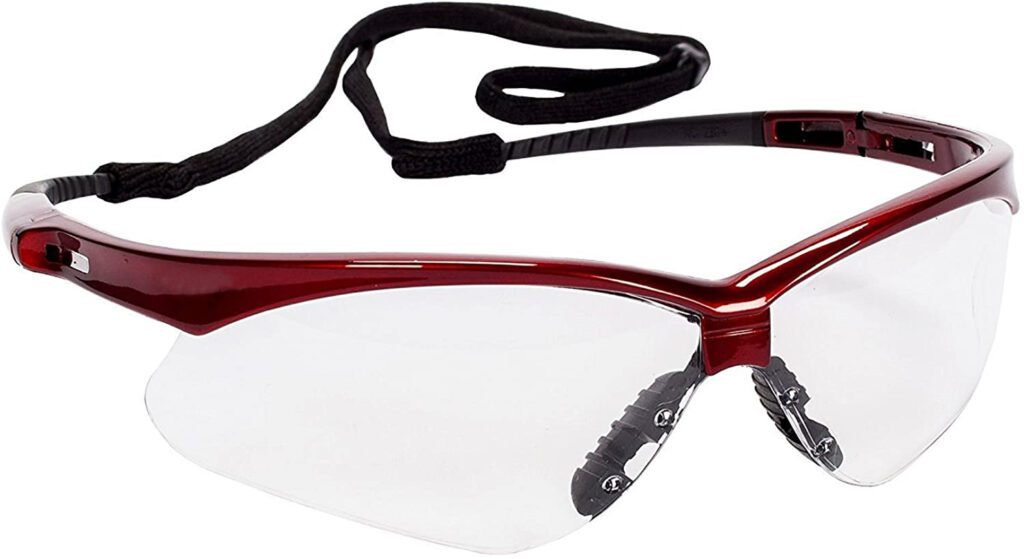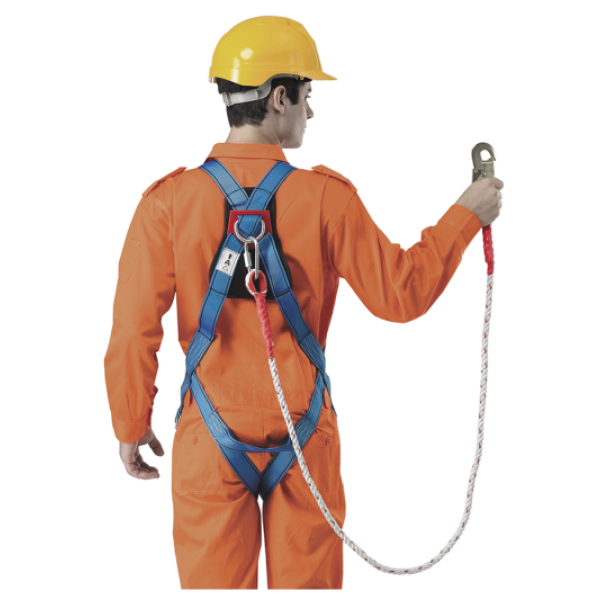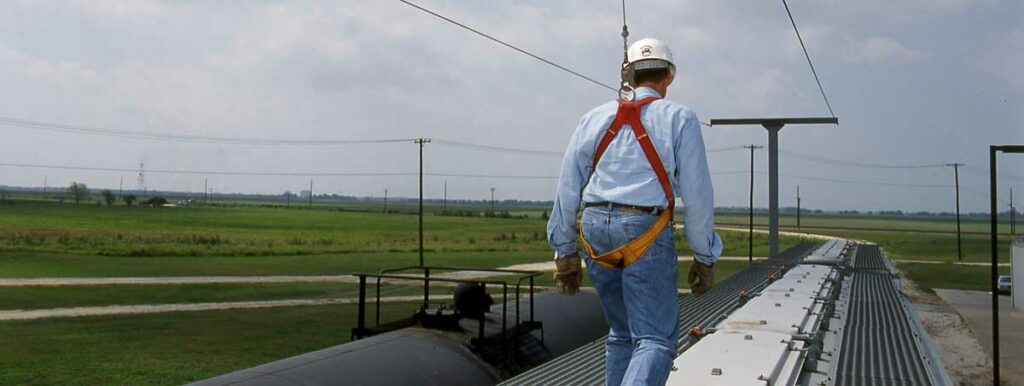The demand for high-rise projects continues to grow due to the reduction of usable land. The rapid development of high-rise projects has led to the rise of fatalities. Safety is an important consideration for all workers who are given tasks that require them to be in and around dangerous parts of a building. The continuous growth of high-rise buildings indicates that there is a need for effective safety and health management. Discussed below are different types of safety equipment used for high-rise buildings.
Types of safety equipments for high rise buildings
Glove Clips
It is designed with a safety break-away system, to help prevent injuries from snagging during high-level rigging. Proven implementation can dramatically reduce glove replacement costs and hand injuries, by helping to ensure workmen have their gloves with them at all times. The glove clip reduces hand injuries by keeping work gloves available to workers at all times and reducing lost glove replacement costs. Weighing just 3/4 ounce and only 4-1/2″ long, the tough engineered grade material holds its memory with a tight grip in all types of weather. The small end attaches to a belt loop or directly to clothing, including one-piece overalls.

Safety helmets
Safety helmets can prevent or minimise injuries to the head, protecting against falling objects or debris, impact with other objects, electric shock and rain. Most head injuries can be avoided if the proper head protection is selected, used and maintained. It is important to take several factors into account when choosing a safety helmet. The level of protection required from a safety helmet varies according to the activity. All head protection is assigned a “Type” and a “Class.” The Type refers to the level of protection from an impact, while the Class refers to the different levels of protection from electricity.ANSI Type I Helmets are designed to reduce force as a result of impact to the top of the head and ANSI Type II Helmets are designed to reduce force as a result of impact to the sides or top of the head. Modern safety helmets have a larger coverage area, protecting the ears and back of the head.

Hard hat-mounted ear muffs
Hard hat-mounted ear muffs fit over the ears to protect against potentially harmful sound levels that can cause hearing loss. These safety ear muffs consist of a headband with padded ear cups that seal around the ears to provide hearing protection by dampening surrounding noise. These provide longer life and a more consistent fit for reaching their optimal noise reduction rating (NRR). They’re also more visible than earplugs for confirming that workers are complying with hearing safety rules. When correctly selected and worn, these products help reduce exposure to hazardous levels of noise. These are ideal for protection against noise arising from a wide range of applications for the high rise works in manufacturing, cement manufacturing, printing, woodworking, heavy engineering etc. New models inserts and spacers help improve attenuation along with new ear cushion foam technology for an effective acoustic seal and reliable protection.

Foresight Safety Glasses
Foresight Safety Glasses are designed with your comfort in mind. They’re adjustable and will provide a sturdy hold so the glasses will not slide down your nose or cause irritations to your ears. Foresight Safety Glasses can be easily lowered or raised when your time on the job begins or ends. The hinges allow eye-wear to be securely connected to the hard hat AND conveniently stored under the brim. They’re adjustable and will provide a sturdy hold so the glasses will not slide down your nose or cause irritations to your ears. Foresight Safety Glasses can be easily lowered or raised when your time on the job begins or ends. These are designed with comfort in mind. They do not irritate your ears or slide down your nose because they attach to your hard hat, not to your head. They are adjustable and can be raised or lowered under the brim of the hard hat. There are slots designed to hold most corded ear protection for a complete head protection system.

Safety harnesses
Safety harnesses are the most crucial piece of equipment for any high elevation job. It is a system of restraints that prevent the wearer from falling from a height. They are set up by making a combination between a stationary and a non-stationary object. In practice, they are rope, locking hardware, webbing and bodywear. By wearing the belt or harness the risk of injury from a fall is greatly reduced. The harness allows the user to attach themselves to a stationary object, therefore ensuring they will not hit the ground in the event of a fall. Falling from a height is one of the most common causes of personal injury in the workplace, so it is very important to make sure you are properly equipped when working up high.It not only improves the wearer’s protection but also allows them to use their hands-free whilst working.

Safety lanyards
Safety lanyards are ropes, wires or cords used to secure personal working tools and other light equipment with the body of the user to prevent loss and accidental dropping, especially while they are working at heights. Lanyards are generally worn around the necks, shoulders, waists and wrists of the user. These can also be temporarily secured to fittings of the towers, ladders, masts, poles, railings and roofs etc. In modern days, these are widely used by the riggers and workers who work high above the ground. There are a wide variety of safety lanyards in both shock-absorbing and non-shock absorbing styles to connect to a lifeline or fall protection anchor point.

Standpipes
Standpipes are fixed piping systems with associated equipment that transports water from a reliable water supply to designated areas of buildings. Such systems are typically provided in tall and large-area buildings. These systems can significantly improve the efficiency of manual fire-fighting operations by eliminating the need for long and cumbersome hose lays from fire apparatus to a fire. Even in buildings that are protected by automatic sprinklers, standpipe systems can play an important role in building fire safety by serving as a backup for, and complement to, sprinklers. Standpipes in high-rise buildings can serve to increase life safety, as well as property protection, because of the lengthy evacuation times associated with tall buildings

Horizontal lifelines
A horizontal lifeline consists of a cable attached to two or more anchor points on a roof-top, crane runway, bridge or outdoor construction site, or any other elevated work area that poses a fall risk to personnel. A horizontal lifeline can be positioned at the base of the structure (, overhead or somewhere in-between these points. These are common fall protection equipment used in work areas that lack existing anchor points for personal ties off. It ensures mobility, safety, and productivity across various applications with precision engineering to meet site-specific needs. This can be customized as per site requirements. With this equipment, inspection, maintenance, and repair activity can be carried out on high-rise buildings.

Suspended platforms
Suspended Platform provides a stable work surface for two people. The platform is raised and lowered by climbing steel cables that are secured to davit arms on the roof. The arms and their mounting points must be professionally designed and installed. Electric motors at each end of the platform are controlled by the operators and are what raise and lower the platform by actually climbing and descending the steel cables. The workers in the platform must wear fall prevention harnesses at all times, and their safety lines must be secured to independent mounting points on the roof; if the platform falls, the workers will hang in position until rescued.

Descenders
Descenders allow the operator to slowly descend down a properly-anchored rope in a controlled manner. There are two basic types of Descenders: Cylinder and Rack Systems. When using Cylinders, the rope wraps around a shaft, slides around the shaft and gently lowers the worker. Rack Systems feature at least four parallel bars that the rope is woven through; these bars slide up and down the bracket and cause resistance, like the shaft on the cylinders. This equipment have the common benefits of allowing a lot of friction control in a variety of conditions, a friction path that won’t cause a twist in the rope, the ability to attach and detach the device from a rope without disconnecting from the harness.

Rope Grabs
Rope Grabs are a critical piece of the safety equation. They are locked to an independently anchored safety rope and then attach directly to the worker’s safety harness via a lanyard. Rope Grabs are intended to be pulled up the rope, but lock in place when they move downwards. These are available in a variety of configurations.

Conclusion
Discussed above are a few of the most used safety equipment used for repair, construction and utility works in high-rise buildings Each of these pieces of equipment is applied based on specific on-site requirements and considerable planning. In order to guarantee proper handling and execution of the designs and plans of high-rise construction, workers must undergo a series of periodical training sessions.

